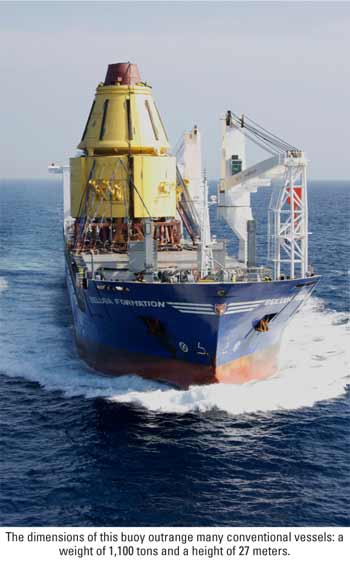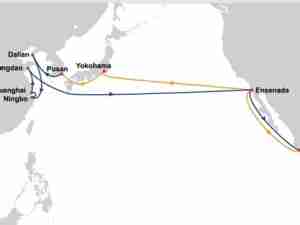
On June 19, 2009 the elaborate preparation culminated in the final part of the project ashore in Asia: the loading of the gigantic buoy onto MV Beluga Formation. Highly defined safety restrictions demanded by the uniqueness and value of the cargo took effect. The sensitive buoy, whose construction took more than a year, was situated on a pier with very shallow waters, therefore, a barge was placed alongside to address this bathometric challenge. The vessel withdrew from the scene in order not to interfere the operation whilst the floating crane approached the jetty to lift the buoy. The safe composition and mooring of the different floating units involved in the loading process required highest prudence to exclude any danger to the buoy.
The floating crane slowly lifted the cargo and positioned it on the multipurpose heavy-lift project carrier which had come alongside again. A specially designed grillage had been welded and was fixed to the weather deck of the vessel. One of the main tasks was guaranteeing the structural integrity of the vessel: The weight and size of the buoy and the grillage put tremendous loads on the ship's structure, in some parts they exceeded 200 tons per square metre. Not only the 'hardware' in the form of special vessels like MV Beluga Formation must be available to handle such forces. Most important are the people who know how to use it and are also able to optimise the trim and the stability for a voyage across the world's oceans. Responsible for that are the transport engineers of Beluga who Yahaya Sanusi is one of: 'The transport of such cargo requires enormous preplanning and calculations. Our success underlines that we know what we are doing and can take such challenges.'
As planned the loading could be concluded within a day's time. Afterwards, the biggest buoy in the world started its voyage of approximately 10,000 nautical miles from Indonesia through the Pacific Ocean and the Panama Canal to an offshore location in the Gulf of Mexico 200 nautical miles from Port Fourchon, USA. The dimensions of the cargo restricted the sight from the bridge of the vessel. Hence, the transport engineers of Beluga implemented several measures to compensate this disadvantage and to comply with the high safety standards fr






